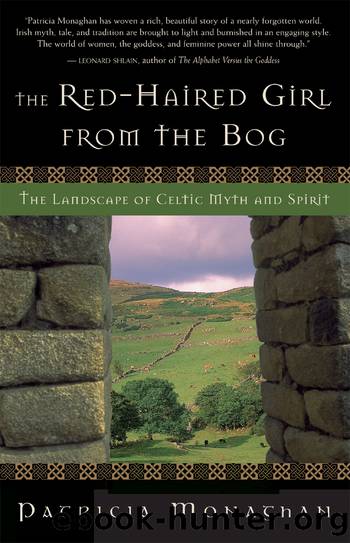The Red-Haired Girl from the Bog by Patricia Monaghan

Author:Patricia Monaghan
Language: eng
Format: epub
ISBN: 9781577318026
Publisher: New World Library
Many cultures connect heat and fire with female power. The sun is a goddess on almost every continent. Fiery mountains, too, are usually female: the volcanoes of the Pacific Rim, from Fuji in Japan to Kilauea in Hawaii to Washingtonâs Mount Saint Helens, were envisioned as fierce strong women. Among the Celts, the archetype of the fiery woman was connected with a belief that virginity intensified feminine power. But what, exactly, virginity meant is a subject of some debate. No sexual relations? No sexual relations with men? No sexual relations with men except on ritual occasions? No sexual relations that led to childbearing? Each has been suggested as the Celtic definition of virginity. Since the valuing of the virgo intacta, the woman with no experience of sexual penetration, was not found among the Celts, it is possible that these priestesses were mothers past childbearing age, women who loved other women, or barren women, rather than virgins as we now define them.
The fire goddess worshiped by Kildareâs virgin priestesses was one of the few pan-Celtic divinities. Each Celtic tribe had its own deities, creating such an enormous pantheon that the generic Celtic oath was âI swear by the gods I swear by.â Not only were the Celts utterly decentralized politically, but they were also pantheists par excellence. They saw divinity everywhere, in this well and that stream and on top of that mountain and of course, over there in that great oak tree. Their innumerable specific holy places demanded equally innumerable specific holy names, so that there are scores of Celtic divinities known only in one location, like Aeracura in the Rhine Valley, or Metz of Trier, or Belisima on the shores of Englandâs Mersey River. But Brigit, sometimes called by her Latinized name Brigantia, is found throughout the Celtic world, from Central Europe through France and Spain and over to the islands of Britain and Ireland. She must have been a powerful goddess indeed to have inspired such widespread worship.
In Ireland, Brigit was depicted as a triple goddess or as three sister-goddesses who shared the same name. She ruled transformation: of rock into metal, as goddess of smithcraft; of illness into health, as midwife goddess of healing; of ideas into art, as goddess of poetry. The triple Brigit was daughter of the Dagda, the earth god, with whom she shares certain powers, especially that of promoting abundance. She was connected with a magical cow with an inexhaustible udder; with fire, both in the sun and in the hearth; and with water, especially that found in healing springs.
Although Kildare is believed to have been the center of worship of Brigit as goddess, we have no Celtic records of a pagan temple there. This is not unusual, for the Celts did not privilege written documents, relying instead upon the phenomenal memories of the filidh, their bards. Not that the Celts were illiterate, but their ogham alphabet â whose invention is attributed to Brigit â was used only for short inscriptions. The Celts
Download
This site does not store any files on its server. We only index and link to content provided by other sites. Please contact the content providers to delete copyright contents if any and email us, we'll remove relevant links or contents immediately.
Becoming Supernatural by Dr. Joe Dispenza(8127)
Crystal Healing for Women by Mariah K. Lyons(7857)
The Witchcraft of Salem Village by Shirley Jackson(7197)
Inner Engineering: A Yogi's Guide to Joy by Sadhguru(6730)
The Four Agreements by Don Miguel Ruiz(6643)
The Power of Now: A Guide to Spiritual Enlightenment by Eckhart Tolle(5613)
Secrets of Antigravity Propulsion: Tesla, UFOs, and Classified Aerospace Technology by Ph.D. Paul A. Laviolette(5313)
The Wisdom of Sundays by Oprah Winfrey(5089)
Room 212 by Kate Stewart(5041)
Pale Blue Dot by Carl Sagan(4920)
Fear by Osho(4663)
The David Icke Guide to the Global Conspiracy (and how to end it) by David Icke(4629)
Animal Frequency by Melissa Alvarez(4400)
Rising Strong by Brene Brown(4382)
How to Change Your Mind by Michael Pollan(4295)
Sigil Witchery by Laura Tempest Zakroff(4183)
Real Magic by Dean Radin PhD(4079)
Man and His Symbols by Carl Gustav Jung(4070)
The Art of Happiness by The Dalai Lama(4065)
